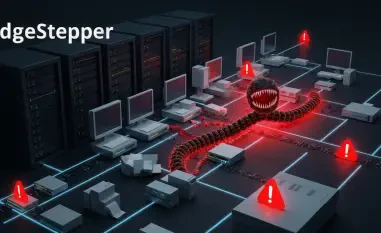In an era where cybersecurity threats are becoming increasingly sophisticated, a new and dangerous ransomware variant known as Beast has emerged, targeting diverse operating systems such as Windows, Linux, and ESXi. Initially discovered by cybersecurity researchers at Cybereason in 2022, this ransomware group has shown persistent evolution in terms of both technical complexity and attack vectors. Beast continues to be an alarming threat due to its sophisticated encryption techniques and versatile nature, making it a formidable adversary in the realm of cybersecurity.
The Evolution of Beast Ransomware
From Delphi to C and Go
Beast ransomware initially made its appearance with versions programmed in Delphi, a development approach that it later abandoned in favor of being written in C and Go. This transition signifies the ransomware’s adaptability and its creators’ commitment to enhancing their malicious software’s efficacy and resilience. Using more contemporary languages like C and Go allows the malware to utilize advanced encryption techniques and achieve greater compatibility across various systems, both modern and legacy.
The encryption mechanics of Beast set it apart from other ransomware. It employs a combination of elliptic-curve encryption and ChaCha20, enabling it to effectively secure data in an impenetrable manner. On Windows systems, Beast utilizes several capabilities, including multithreaded file encryption for speed and efficiency, process termination to halt critical security processes, and the deletion of shadow copies to eliminate recovery options. These features underscore the malware’s technical sophistication and its creators’ deep understanding of both Windows architecture and effective encryption methods.
Targeting Linux and ESXi Systems
The Linux and ESXi variants of Beast demonstrate a high degree of customization and versatility. These versions offer specific features like customizable encryption paths and virtual machine (VM) shutdown capabilities, which can disrupt critical environments running on Linux or ESXi. The ability to shut down VMs makes it especially dangerous for enterprises relying on virtualized environments for their IT infrastructure. Customizable encryption paths allow attackers to focus on valuable data, increasing their leverage during ransom negotiations.
Beast’s multi-platform approach, including both Windows and non-Windows systems, highlights a strategic shift towards broader disruption. By targeting Linux and ESXi, the ransomware creators acknowledge the growing trend of organizations utilizing mixed operating systems and virtual environments. Even as enterprises strive to safeguard their digital assets, the evolving tactics of adversaries like Beast force them to continually adapt their security posture, emphasizing the need for robust multi-faceted defenses.
Modus Operandi and System Penetration
Infection Vectors and Methods
To infiltrate systems, Beast ransomware employs a variety of spread vectors, each chosen for its efficacy in penetrating network defenses. These include phishing emails designed to trick users into downloading malicious attachments, compromised Remote Desktop Protocol (RDP) endpoints which offer direct access to systems, and Server Message Block (SMB) network scans that seek out vulnerabilities across connected devices. This multifaceted approach ensures that Beast can exploit any available weakness, making it more dangerous and harder to counter.
Manipulating file access permission before encryption is another critical aspect of Beast’s modus operandi. Exploiting legitimate Windows processes like RstrtMgr.dll (Restart Manager), it prepares files for encryption by granting the ransomware the necessary permissions to alter and lock them. Multithreading is employed to accelerate the encryption process, impacting a wide array of file formats, including documents, images, and databases. This rapid encryption not only reduces the response time for administrators to counter the attack but also increases the pressure to meet ransom demands.
Impact on Infected Systems
The ransomware leaves a chilling hallmark—README.txt—a ransom note placed in every affected directory. This note provides victims with instructions on how to decrypt their files, generally involving payment in cryptocurrency. Users can also interact with the ransomware’s graphical user interface (GUI) through a specific keystroke combination, offering insight into the malware’s complex nature and the sophistication with which it was developed. The GUI facilitates further control for attackers and can direct victims towards fulfilling ransom demands more efficiently.
The deletion of shadow copies through Windows Management Instrumentation (WMI) is a strategic maneuver by Beast to undermine recovery options, ensuring that even backup files are not exempt from its reach. As files across all connected networks become encrypted, the scope of the damage becomes evident, with entire corporate networks crippled by the malicious encryption. The consequential downtime and potential data loss underscore the high stakes involved in combating ransomware and the importance of adopting preventive measures.
Defensive Measures and Best Practices
Proactive Cybersecurity Strategies
Defending against Beast ransomware requires a proactive approach encompassing several layers of cybersecurity. Early detection is critical; therefore, tracking Beast affiliates can provide anticipatory warning signals of impending attacks. Promoting multi-factor authentication (MFA) and ensuring regular patching can mitigate vulnerabilities that ransomware groups frequently exploit. Enabling anti-malware and anti-ransomware solutions also enhances system defenses, providing an automated response to detected threats and reducing the likelihood of successful infiltration.
Protecting shadow copies and maintaining up-to-date system patches are crucial tactics for resilience against ransomware attacks. Regularly backing up important files ensures that data can be restored without succumbing to ransom demands, thereby maintaining business continuity even in the face of an attack. Additionally, enabling variant payload prevention helps identify and counteract different versions of the ransomware, ensuring comprehensive defense against its evolving iterations.
Comprehensive Cyber Hygiene
In today’s world, where cybersecurity threats are growing more advanced, a new and highly dangerous ransomware variant called Beast has surfaced, targeting a variety of operating systems like Windows, Linux, and ESXi. Initially identified by cybersecurity researchers at Cybereason in 2022, Beast has continually evolved in both its technical sophistication and the methods it uses to launch attacks. This relentless development makes it a significant threat in the realm of cybersecurity. What sets Beast apart is its advanced encryption techniques and its ability to adapt to different environments, which make it an exceptionally challenging adversary. The ransomware’s continued growth in complexity and versatility poses a grave concern for cybersecurity professionals. As Beast adapts and improves, it becomes increasingly critical for organizations and individuals alike to enhance their security measures to protect against such formidable threats. The emergence of Beast underscores the critical need for ongoing vigilance and innovation in cybersecurity strategies to combat these ever-evolving dangers effectively.













